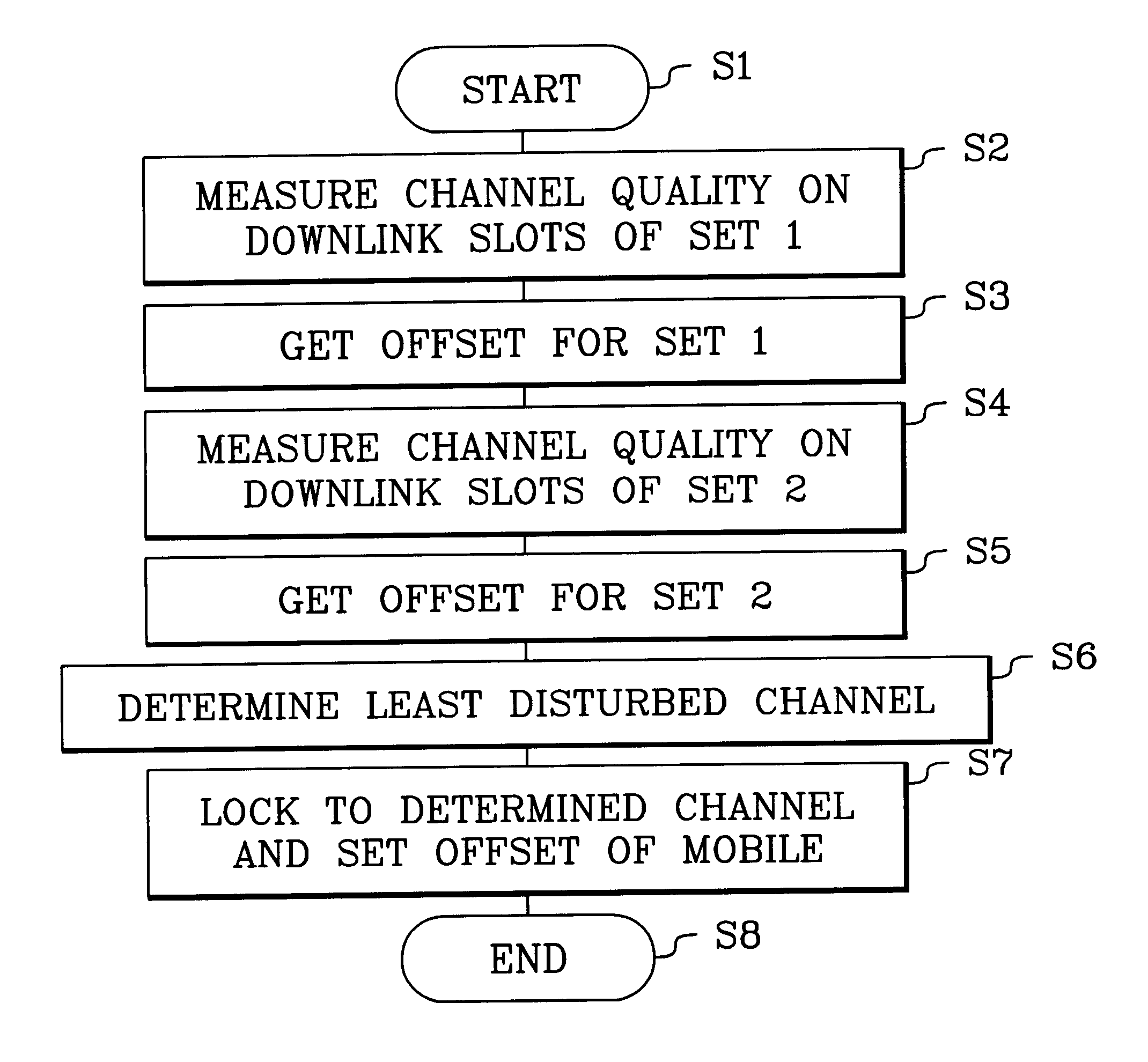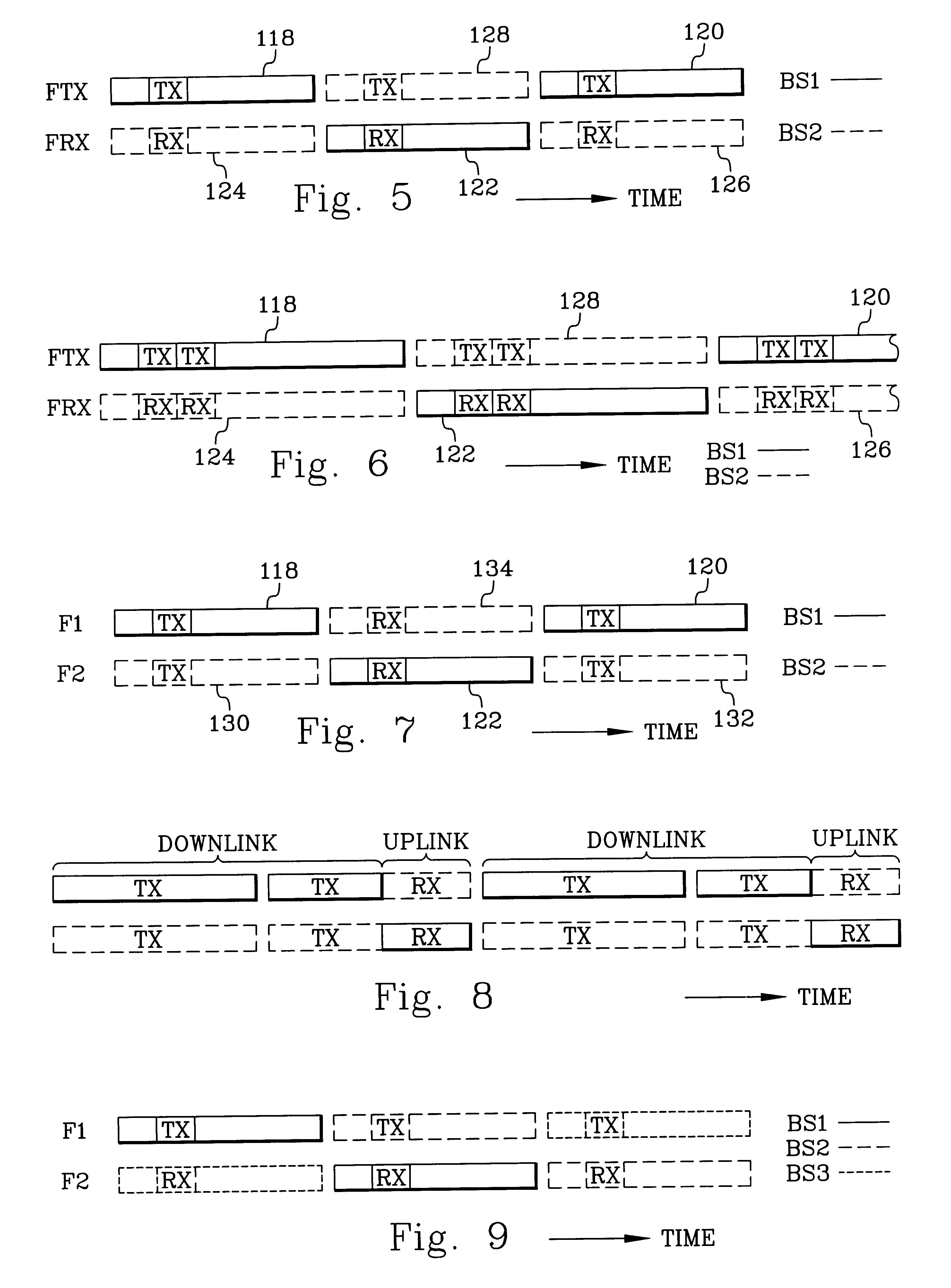TDMA-TDD/FDD radio communication system and channel selection method and apparatus for such a system
a radio communication system and channel selection technology, applied in the field of tdmatdd/fdd radio communication system and channel selection method and apparatus for such a system, can solve the problem of significant waste of valuable spectrum resources, and achieve the effect of improving transmission quality and providing spectrum efficiency
- Summary
- Abstract
- Description
- Claims
- Application Information
AI Technical Summary
Benefits of technology
Problems solved by technology
Method used
Image
Examples
Embodiment Construction
Terminology of prior art TDMA-TDD and TDMA-FDD systems is inconsistent. For the purposes of this description the following terminology will therefor be used:
A downlink frame is a collection of consecutive time slots (bursts) transmitted from a base station.
An uplink frame is a collection of consecutive time slots received in a base station.
A duplex frame is the combination of the downlink and uplink frames.
FIG. 1 schematically shows a part of a cellular mobile radio communication system. A network controller, e.g. a mobile services switching center MSC, is connected to two geographically separated base stations BS1 and BS2 in the same area (partially overlapping radio coverage). Base stations BS1, BS2 are in radio contact with respective mobile radio stations MS1 and MS2. The present invention is primarily concerned with the nature of the radio connection between these base and mobile stations.
FIG. 2 schematically shows the usage of a carrier frequency in a frequency band used by a ...
PUM
 Login to View More
Login to View More Abstract
Description
Claims
Application Information
 Login to View More
Login to View More - R&D
- Intellectual Property
- Life Sciences
- Materials
- Tech Scout
- Unparalleled Data Quality
- Higher Quality Content
- 60% Fewer Hallucinations
Browse by: Latest US Patents, China's latest patents, Technical Efficacy Thesaurus, Application Domain, Technology Topic, Popular Technical Reports.
© 2025 PatSnap. All rights reserved.Legal|Privacy policy|Modern Slavery Act Transparency Statement|Sitemap|About US| Contact US: help@patsnap.com



